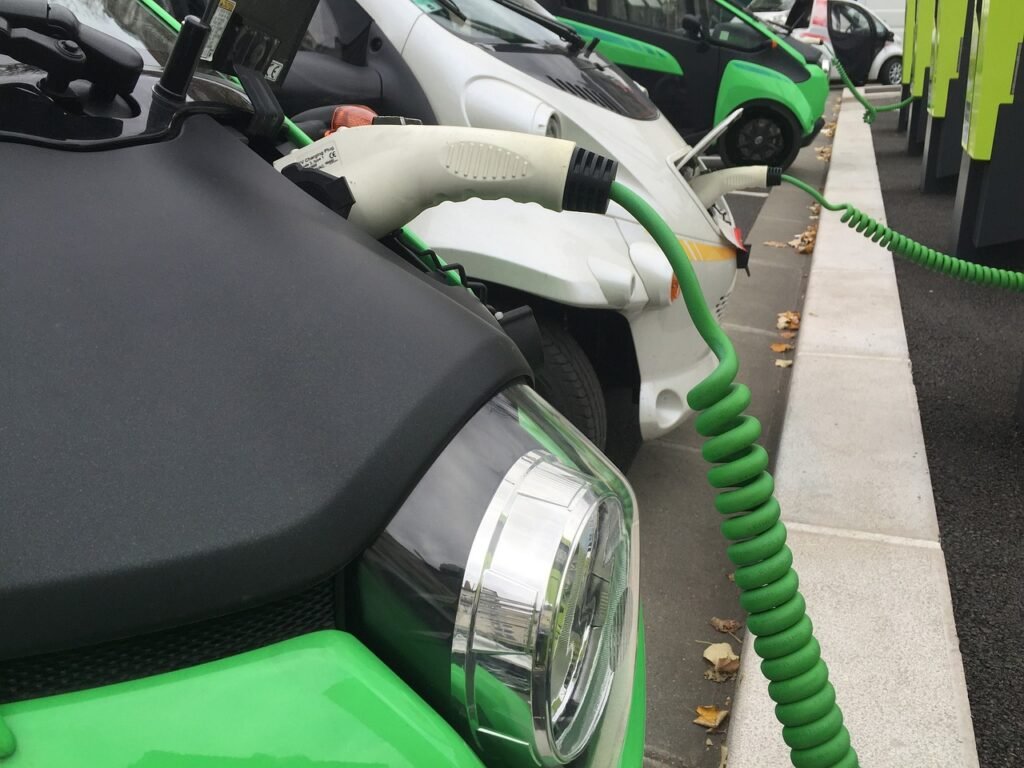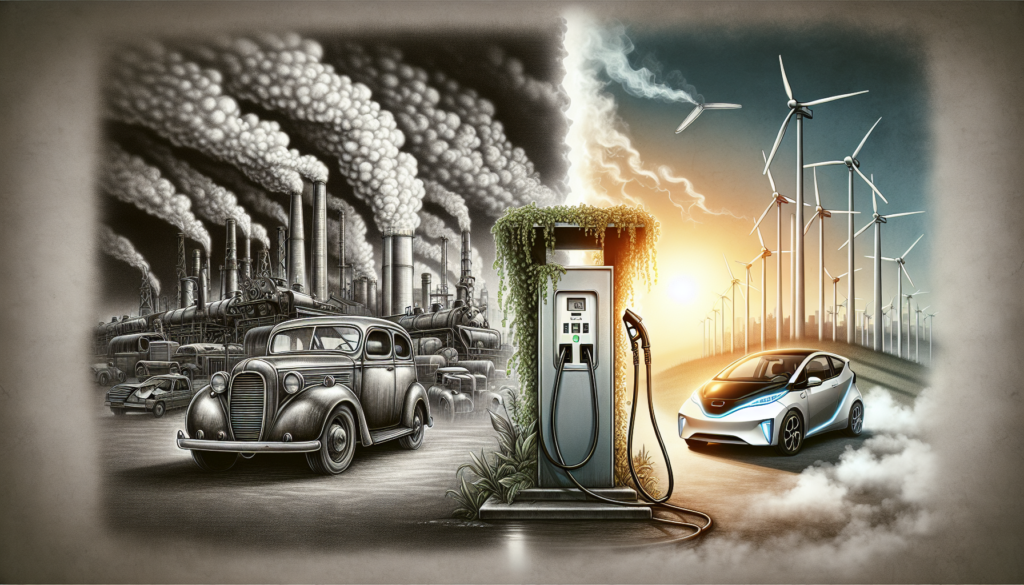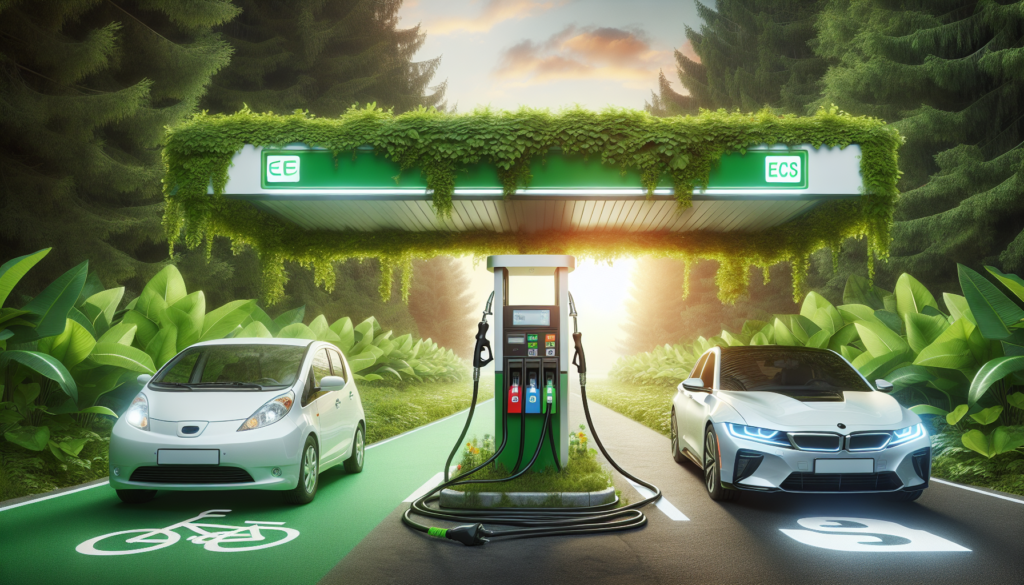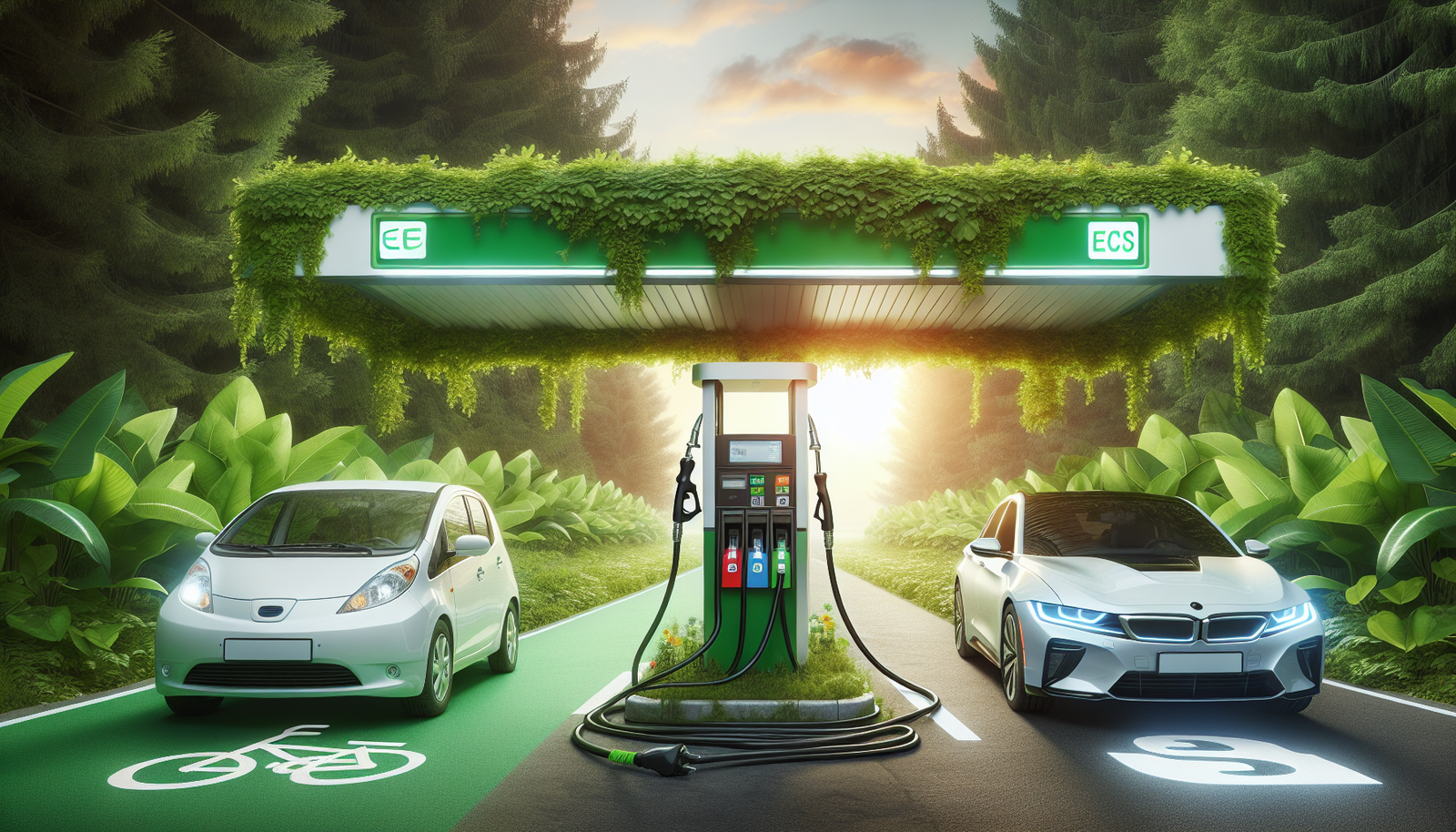So, you’ve probably heard a lot of buzz about electric vehicles lately, and you may be wondering if all the hype is justified. Are electric vehicles really more sustainable than traditional cars? It’s a question on the minds of many environmentally-conscious individuals like yourself. In this article, we’ll take a closer look at the sustainability of electric vehicles compared to their traditional counterparts, examining factors such as emissions, energy consumption, and overall environmental impact. Buckle up, because we’re about to navigate through the world of electric vehicles and explore their sustainability credentials in a friendly, straightforward manner.
Environmental Impact of Electric Vehicles
Electric vehicles (EVs) have gained significant attention in recent years due to their potential to reduce emissions and minimize their overall environmental impact. This article explores the various ways in which EVs contribute to a sustainable future.
Reduction in Emissions
One of the primary environmental benefits of EVs is the substantial reduction in greenhouse gas emissions compared to traditional internal combustion engine vehicles (ICEVs). EVs do not emit tailpipe pollutants, such as carbon dioxide (CO2), which is a major contributor to climate change. By transitioning to electric mobility, we can significantly reduce air pollution and mitigate the adverse effects on human health and the environment.
Source of Electricity
While it is true that the operation of EVs produces zero tailpipe emissions, it is essential to consider the source of the electricity used to charge them. The environmental impact of EVs depends heavily on the energy mix of the grid from which they draw electricity. If the grid relies on fossil fuel-based power plants, the emissions associated with the generation of electricity for EVs may not be zero. However, as the transition to renewable energy sources like wind and solar accelerates, the environmental benefits of EVs will continue to grow.
Battery Production
The production of EV batteries involves a complex supply chain, which can have environmental implications. The extraction of raw materials, such as lithium and cobalt, can lead to environmental degradation if not done responsibly. Additionally, the manufacturing process itself requires energy and produces waste. However, advancements in battery technology and research into more sustainable materials are ongoing, aiming to minimize the environmental impact of battery production.
Battery Disposal
Another aspect to consider is the end-of-life stage of EV batteries. While EV batteries can have a long lifespan, they will eventually reach the end of their usable life and need to be recycled or disposed of properly. The recycling of batteries is crucial to recover valuable materials and minimize the environmental impact of their disposal. Proper recycling practices need to be developed and implemented to ensure the sustainable management of EV batteries.
Energy Efficiency and Fuel Consumption
EVs offer improved energy efficiency compared to ICEVs, primarily due to their electric drivetrains and regenerative braking systems. This increased efficiency translates to reduced fuel consumption and lower energy demand, further contributing to a greener transportation sector.
Comparing Efficiency
The energy efficiency of EVs is significantly higher compared to ICEVs. While traditional cars have an average efficiency of around 20-30%, EVs can achieve efficiencies of over 90%. This means that a higher proportion of the energy supplied to an EV is actually used to propel the vehicle, reducing wasted energy and increasing overall efficiency.
Energy Source Efficiency
The efficiency of EVs is determined not only by their drivetrain but also by the source of electricity used to charge them. Renewable energy sources, such as wind and solar, have higher efficiency rates compared to fossil fuel power plants. By charging EVs with electricity generated from renewable sources, we can maximize the overall environmental benefits and energy efficiency of these vehicles.
Braking Regeneration
Regenerative braking is a feature unique to EVs that allows them to convert kinetic energy into electrical energy, which is then stored in the battery. This process reduces energy waste and increases efficiency by reusing energy that would otherwise be lost during braking. It also reduces wear and tear on brake components, resulting in longer-lasting and more efficient braking systems.

Life Cycle Analysis
To fully understand the environmental impact of EVs, it is crucial to analyze their life cycle from manufacturing to end-of-life.
Manufacturing Stage
The manufacturing of EVs requires energy and resources, much like any other vehicle. However, studies have shown that EVs have a relatively higher carbon footprint during the manufacturing stage compared to ICEVs. This is mainly due to the energy-intensive production of batteries and the extraction of raw materials. Nonetheless, as advancements in manufacturing processes and materials continue, the environmental impact of EV production is expected to decrease.
Operational Stage
During the operational stage, EVs produce zero tailpipe emissions if powered by renewable or clean energy sources. This significantly reduces air pollution, greenhouse gas emissions, and dependence on fossil fuels. The operational stage is where the environmental benefits of EVs become apparent and contribute to a healthier and more sustainable planet.
End-of-Life Stage
At the end of their life cycle, EV batteries require proper recycling or disposal. Currently, recycling rates for EV batteries are relatively low, but efforts are being made to improve recycling technologies and processes. By recycling batteries, valuable materials can be recovered, reducing the need for new mining and minimizing environmental impacts associated with battery production.
Potential Benefits for the Planet
The adoption of EVs brings numerous benefits to the planet, addressing critical environmental challenges and promoting sustainability.
Reduced Air Pollution
One of the most immediate benefits of EVs is the reduction in air pollution. With zero tailpipe emissions, EVs help improve air quality and reduce harmful pollutants, such as nitrogen oxides (NOx) and particulate matter (PM), leading to better public health outcomes and a cleaner environment.
Mitigating Climate Change
Transportation is a significant contributor to global greenhouse gas emissions. By replacing ICEVs with EVs, we can substantially reduce CO2 emissions and combat climate change. The transition to an electric transportation system is a crucial step in achieving national and global emission reduction targets.
Conservation of Resources
EVs have the potential to contribute to the conservation of natural resources. By relying on electricity rather than gasoline or diesel fuel, we can reduce our dependence on fossil fuels, which are finite resources. Additionally, advancements in battery technology may lead to the use of more sustainable and recyclable materials, further preserving valuable resources.

Challenges and Drawbacks
While EVs offer numerous environmental benefits, there are still challenges and drawbacks that need to be addressed for their widespread adoption.
Limited Range and Charging Infrastructure
The limited driving range and the availability of charging infrastructure remain significant concerns for potential electric vehicle owners. Although the range of EVs has been improving, many people still experience “range anxiety,” fearing that they will run out of battery power during their journeys. Expanding charging infrastructure, including fast-charging stations, is essential to alleviate this concern and promote the adoption of EVs.
Battery Production Impact
As mentioned earlier, the production of EV batteries involves the extraction of raw materials and energy-intensive manufacturing processes, contributing to environmental impacts. Research and development efforts are continuously focused on improving battery production methods to reduce these impacts. From exploring alternative materials to developing more efficient manufacturing processes, progress is being made to minimize the environmental footprint of battery production.
Rare Earth Element Extraction
Certain components of EVs, like permanent magnets used in electric motors, require rare earth elements (REEs) for their production. The extraction and processing of REEs have significant environmental impacts, including habitat destruction and water pollution. Developing alternative materials and reducing the reliance on REEs in EV components can help mitigate these environmental challenges.
Rebound Effect
The rebound effect refers to the potential increase in energy consumption that may occur due to the greater efficiency and lower operating costs of EVs. While EVs are more energy-efficient and cost-effective to operate, this may lead to increased travel demand and overall energy consumption. Policies and strategies need to be implemented to encourage sustainable travel behavior and help mitigate any rebound effects.
Economic Considerations
Apart from the environmental benefits, EVs also hold economic advantages that can contribute to sustainable development.
Purchase Price and Maintenance Costs
Although the upfront purchase price of EVs is generally higher than that of ICEVs, the long-term cost savings can outweigh the initial investment. EVs have fewer moving parts and require less maintenance compared to their traditional counterparts, resulting in reduced maintenance and repair costs over the vehicle’s lifetime.
Economic Stimulus
The growth and adoption of EVs can provide significant economic stimulus, creating jobs and fostering economic development. The manufacturing, installation, and maintenance of EVs and their associated infrastructure contribute to job creation and opportunities in various sectors, including manufacturing, renewable energy, and technology.
Job Creation
The transition to an electrified transportation system requires a skilled workforce. By investing in training and education programs focused on electric mobility and related technologies, we can ensure a steady supply of skilled workers needed to support the burgeoning electric vehicle industry. Job creation in the EV sector can contribute to a more sustainable and inclusive economy.

Government Policies and Incentives
Government support and policies play a crucial role in accelerating the adoption of EVs and promoting sustainable transportation.
Support for EV Adoption
Governments around the world are implementing policies to support the uptake of EVs. This includes establishing targets for EV market share, investing in charging infrastructure, and providing incentives for the purchase of EVs. These measures aim to reduce barriers, promote consumer confidence, and stimulate the demand for electric vehicles.
Tax Credits and Rebates
Tax credits and rebates can significantly reduce the cost of purchasing an EV, making them more accessible and financially viable for consumers. Governments offer various incentives such as tax credits, grants, and rebates to encourage the adoption of EVs and incentivize the transition to cleaner transportation options.
Promotion of Green Transportation
Government policies can also focus on promoting green transportation beyond EVs. This includes investing in public transportation, developing cycling and walking infrastructure, and encouraging carpooling and ridesharing initiatives. By providing sustainable transportation alternatives, governments can reduce the overall demand for private vehicles and promote a greener and more efficient transportation system.
Technological Advancements
Technological advancements play a crucial role in enhancing the efficiency, performance, and sustainability of EVs.
Battery Technology
The development of more advanced and efficient battery technologies is a key area of focus for the EV industry. Improvements in battery energy density, charging speed, and lifespan will address concerns related to range anxiety and charging times, further accelerating the adoption of EVs. Additionally, research into alternative battery chemistries and materials may lead to more sustainable and recyclable battery systems.
Charging Technology
Advancements in charging technology are essential to support the widespread adoption of EVs. Faster charging stations, such as ultra-fast and superchargers, will reduce charging times and alleviate range anxiety. Wireless charging technologies and vehicle-to-grid integration also hold promise in optimizing charging efficiency and grid stability.
Smart Grid Integration
Smart grid integration allows for intelligent and efficient management of electricity demand and supply. By utilizing Vehicle-to-Grid (V2G) technology, EVs can serve as energy storage devices and feed excess power back into the grid during peak demand periods. This not only supports the grid’s stability but also facilitates the integration of renewable energy sources by storing surplus electricity for use during low-demand periods.

Market Trends and Consumer Perception
Understanding market trends and consumer perceptions is vital in predicting the future of EV adoption and identifying potential barriers.
Global EV Market Growth
The global electric vehicle market has experienced significant growth over the past decade. This growth is expected to continue as governments, automakers, and consumers recognize the environmental and economic benefits of electric mobility. As battery costs decrease and charging infrastructure expands, the EV market is poised for continued expansion in the coming years.
Consumer Attitudes and Awareness
Consumer attitudes and awareness of EVs play a crucial role in their adoption. While some consumers are enthusiastic about the environmental benefits and cost savings of EVs, others may still have concerns about range, charging infrastructure, and driving experience. Effective education campaigns and positive experiences with EVs can help address these concerns and increase consumer acceptance and adoption.
Range Anxiety
Range anxiety, the fear of running out of battery power during a trip, is a common concern among potential EV buyers. However, the range of EVs has been steadily increasing, and advancements in charging infrastructure are alleviating this anxiety. With the development of fast-charging stations and an expanding network of charging points, range anxiety is becoming less of a barrier to EV adoption.
Future Outlook
The future of electric vehicles looks promising, with significant potential for continued growth and sustainability.
EV Adoption Predictions
Experts predict that the adoption of EVs will continue to accelerate in the coming years. As battery costs decrease, driving ranges improve, and charging infrastructure expands, EVs are becoming increasingly attractive to consumers. With the growing commitment to reduce greenhouse gas emissions and combat climate change, EVs are emerging as a key component of a sustainable transportation system.
Transition to Renewable Energy
As the adoption of EVs increases, so does the urgency to transition to renewable energy sources. The integration of EVs with renewable energy generation will further enhance their environmental benefits and reduce dependence on fossil fuels. This transition will require investments in renewable energy infrastructure, energy storage, and grid management to ensure a sustainable and reliable energy supply.
Development of Sustainable Materials
The development of sustainable materials for EV production is a critical area of research. Finding alternative materials to replace those with a significant environmental footprint, such as rare earth elements, can reduce the environmental impact of EV manufacturing. Furthermore, exploring the use of recycled and bio-based materials can contribute to a circular economy and minimize resource consumption.
In conclusion, electric vehicles have the potential to significantly reduce emissions, improve energy efficiency, and mitigate the adverse effects of climate change. The numerous environmental benefits they offer, coupled with economic advantages and technological advancements, make EVs a compelling choice for a sustainable future. However, there are still challenges and barriers that need to be overcome to ensure their widespread adoption. Continued investment in research, development, and infrastructure, along with supportive government policies and consumer education, will be crucial in realizing the full potential of electric vehicles and achieving a greener and more sustainable transportation system.


